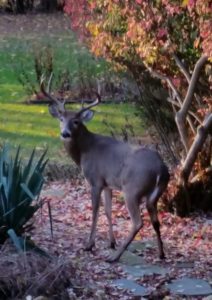 Dogs and their ability to detect diseases through their smelling abilities could be important in efforts to control the spread of the prion disease called chronic wasting disease (CWD). Different diseases, including CWD, have characteristic odors or scents.
Dogs and their ability to detect diseases through their smelling abilities could be important in efforts to control the spread of the prion disease called chronic wasting disease (CWD). Different diseases, including CWD, have characteristic odors or scents.
CWD is an always fatal neurologic prion disease (similar to mad cow disease) that is slowly spreading through deer,moose, and elk populations throughout the US and Canada. A recent study found that dogs trained to detect the odor of CWD were able to detect CWD in deer feces with over 80% accuracy.
Currently there is no way to detect the disease in animals before symptoms set in. The fear is that while the disease is now limited to deer, moose, and elk, it could make a cross-species jump to humans. (More information)
From CIDRAP (Center for Infectious Disease Research & Policy): Study: Dogs can detect chronic wasting disease in white-tail deer
Chronic wasting disease, a fatal prion disease found in cervids, can be detected by dogs trained to identify the scent, according to a new study published today in PLoS One. The dogs were able to identify infected deer through feces samples.
Six dogs were trained using scent boxes and fecal samples from both farmed and wild white-tail deer (WTD).
"A session consisted of 20 trials for each of the six dogs with the position of each box being pseudo-randomized for each trial. During initial training for the passive "sit" response, it took 8 sessions to solidify the desired behavioral response," the authors wrote. "One randomly positioned box of the five held a vial containing fecal material collected from a CWD infected WTD."
Dogs were more than 80% accurate
After 2 days of scent box testing the animals were field tested, and then were given various tests to sniff out CWD, all with more than 80% accuracy.
"CWD management is complicated by the lack of practical, rapid, non-invasive, live-animal screening tests," the authors wrote. "This study adds to our understanding of the fundamentals of mammalian olfaction and how it can be leveraged to be used as an important tool in the surveillance and management of CWD."
The authors of the study said next steps would include determining if dogs can detect the urine and feces of CWD infected deer at historical bait stations and long vacated salt licks.
